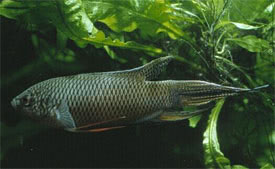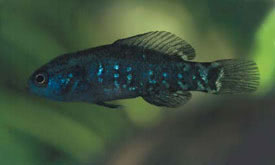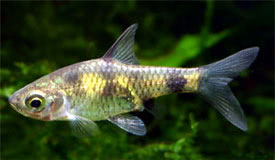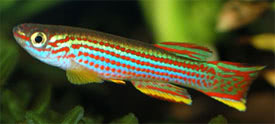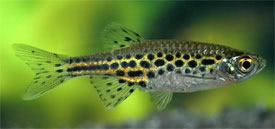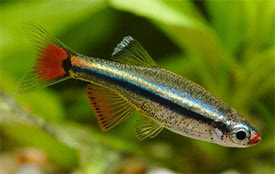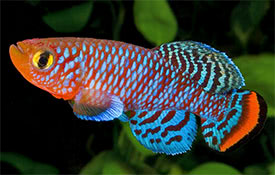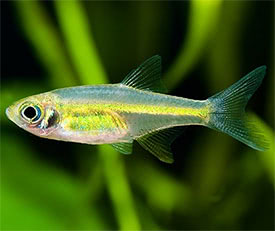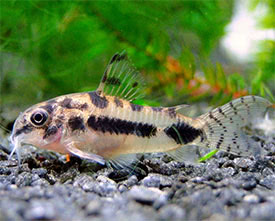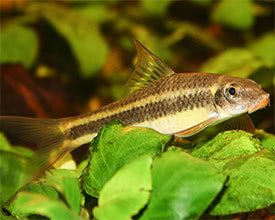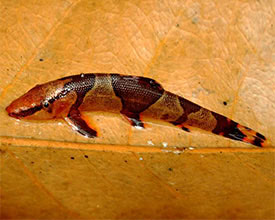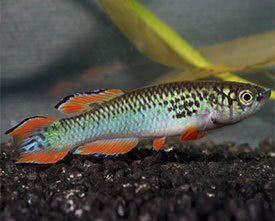
 Magyarul / Hungarian
Magyarul / Hungarian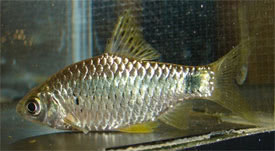
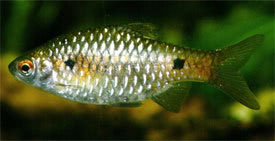

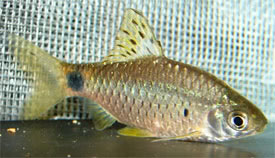
- Scientific name: Pethia ticto
- Synonyms: Puntius ticto, Barbus punctatus, Barbus stoliczkanus, Barbus ticto, Puntius punctatus, Puntius stoliczkae, Rothee ticto, Systomus ticto, Systomus tripunctatus
- Common name: Two-spot barb, Ticto barb
- Group: Cyprinids
- Habitat: Asia; from India and Sri Lanka to the Himalayas.
- Size: 8 cm
- Biotope: In rivers, streams and occasionally standing water.
- Social behavior: An active but peaceful and undemanding species which enjoys tankmates.
- Diet: Omnivorous; All types of live foods, frozen foods, flakes.
- Breeding: Quite easy
- Tank: Minimum 85 litres
- Population: 5-6 fish for 120 litres
- Decoration: Leave large open swimming areas. Plant the corners and rear of the aquarium with hardy plants. The substrate should be fine gravel or sand and a few floating plants add comfort.
- Temperature: 19-26 °C
- pH: 6-7
- Hardness: 3-15 NK°
- Lifespan: 5-6 years
Description: The ticto barb is silver and gold with two black spots; one just before the pectoral fin and one near the back tail. Aside from the spawning season it is difficult to determine the differences between sexes. Sexually mature females are more powerful and generally have no spots on their dorsal fins. Sexually mature male is thinner and the dorsal fin normally show black spots toward the fin edge. Their bodies have a reddish-brown tinge.
For breeding water temperatures should be 74-79 °F (24-26 °C). Place one female with several males into the tank. The tank should be large with lowered waterlevel, and have a thin layer of gravel. Provide fine leafed plants for the eggs to scatter into. The water should be well aged and have a neutral pH. Up to 500 eggs are laid by a single female. After spawning the parents should be removed. After 30 hours the eggs hatch. When the young fishes are swimming free you can raise them with baby brine shrimp and fine crushed dry food.





